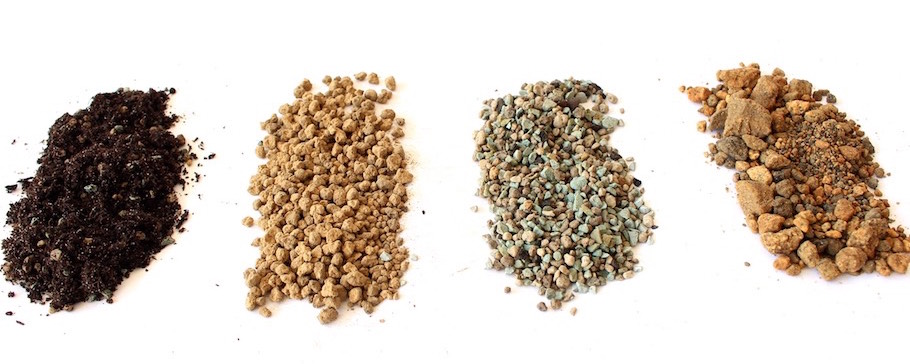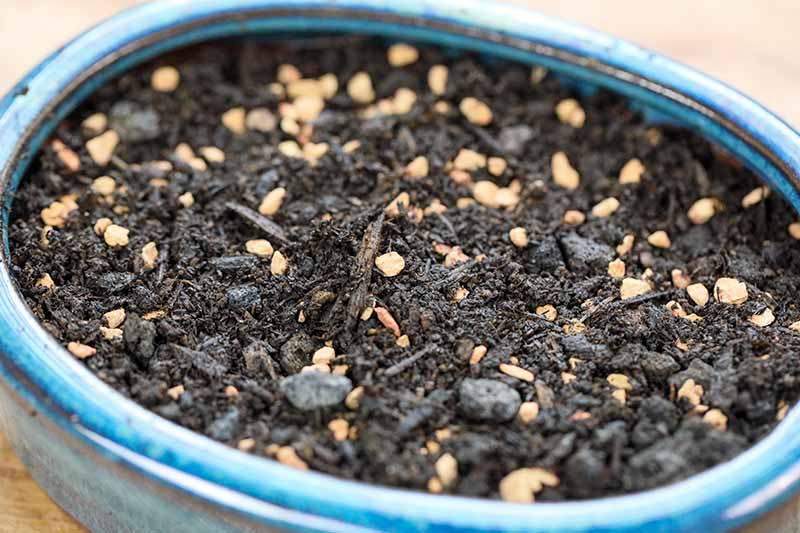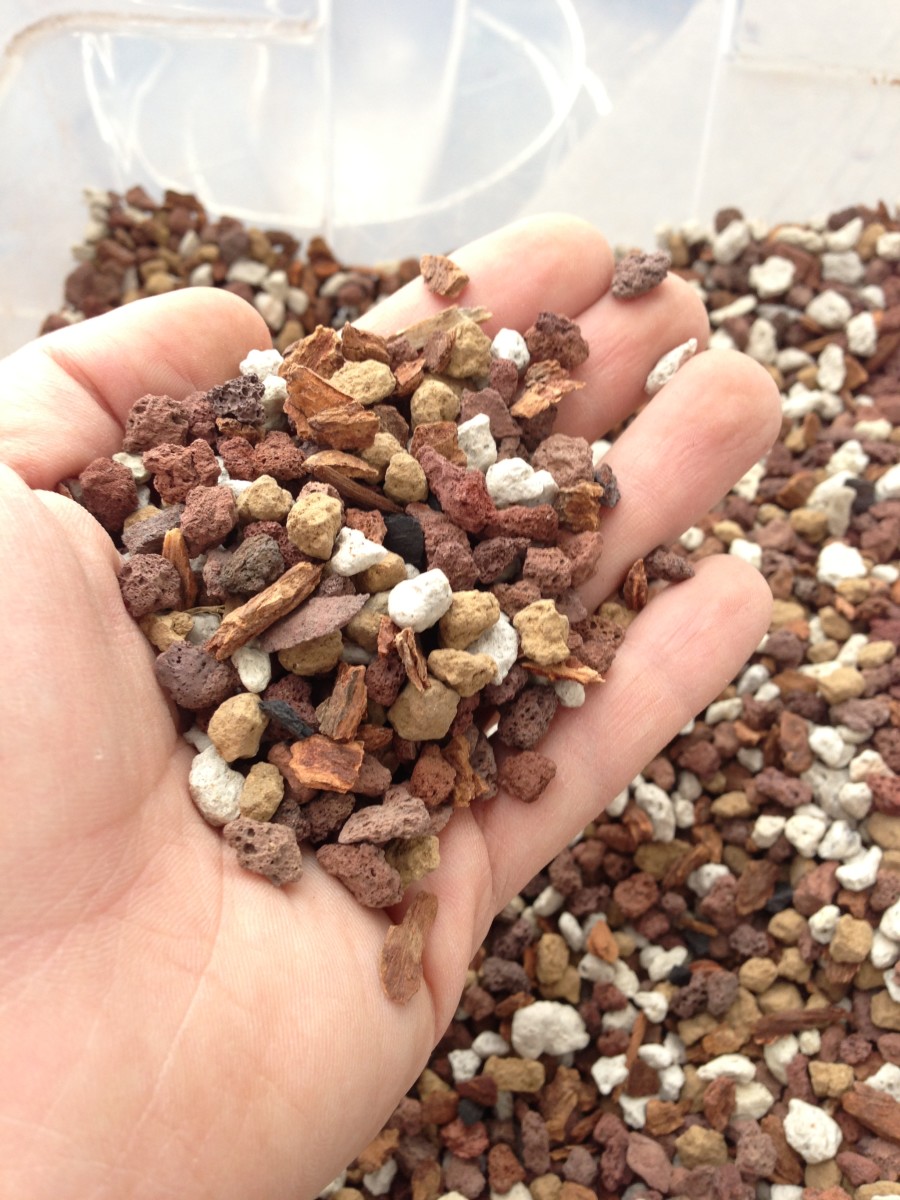In this post, we'll discover the different sorts of soil and substrates Employed in bonsai cultivation, such as natural and organic and inorganic choices.
We are going to also learn proposed soil mixtures for a variety of bonsai species, for instance deciduous, coniferous, and indoor kinds. From akadama and pumice to moss and river sand, we are going to dive into the fascinating planet of bonsai soil and allow you to understand why It truly is an essential A part of cultivating these exquisite trees.

Bonsai soil
What is bonsai soil?
Bonsai soil is a specialized type of soil that is specifically formulated for growing and maintaining bonsai trees. Unlike regular garden soil, bonsai soil is well-draining and provides the necessary nutrients and moisture balance for the tree's root system. The composition of bonsai soil is carefully designed to meet the unique needs of bonsai trees, ensuring their health and longevity.
The importance of bonsai soil
The choice of soil plays a crucial role in the success of your bonsai tree. The right soil provides optimal drainage, allowing excess water to flow freely and preventing root rot. It also promotes a healthy and well-developed root system, which is essential for the overall health and growth of the tree. Bonsai soil retains moisture while allowing air to reach the roots, striking the perfect balance for the tree's needs. Choosing the right bonsai soil is essential for maintaining a healthy and thriving bonsai tree.
Bonsai substrates
What are bonsai substrates?
Bonsai substrates refer to the different materials that can be used to create the ideal soil composition for bonsai trees. These substrates are carefully chosen to meet the specific needs of different species of bonsai trees and to ensure proper water drainage and nutrient availability.
Different types of bonsai substrates
There are various types of bonsai substrates available, each with its own unique characteristics and benefits. Some common bonsai substrates include:
- Organic materials: These include ingredients such as bark, peat moss, and coconut coir. Organic substrates help retain moisture and provide essential nutrients to the bonsai tree.
- Inorganic elements: These contain components like pumice, lava rock, and akadama. Inorganic substrates provide fantastic drainage, making certain that excessive drinking water won't accumulate around the roots with the bonsai tree.
- Soil amendments: They are substances which can be added to the soil combination to reinforce its Houses. Samples of soil amendments incorporate perlite, vermiculite, and sand. They Enhance the soil's aeration, water-Keeping potential, and nutrient availability.
By comprehension the different types of bonsai substrates and their Houses, you may decide on the most fitted a person for the bonsai tree's requires.
Organic and natural or Inorganic Soils
Organic soils for bonsai
Natural soils for bonsai are made up of natural components for example bark, peat moss, coconut coir, and compost. These elements supply a abundant supply of nutrients to the bonsai tree and advertise nutritious root growth. Organic and natural soils even have superior drinking water retention properties, ensuring that the tree receives suitable moisture concerning watering classes. However, it's important to note that organic and natural soils may perhaps stop working over time and turn into compacted, leading to inadequate drainage and likely root troubles.
Inorganic soils for bonsai
Inorganic soils for bonsai include resources like pumice, lava rock, akadama, and soil amendments like perlite or vermiculite. These elements have great drainage Houses, protecting against waterlogged soil and endorsing aeration around the roots. Inorganic soils are most well-liked by quite a few bonsai lovers due to their longevity and ability to provide a steady atmosphere for the bonsai tree's root system. Having said that, They could call for a lot more frequent watering and extra fertilization, as they do not hold just as much humidity or nutrients as organic and natural soils.
Advantages and drawbacks of working with organic and natural and inorganic soils for bonsai
Picking amongst natural and inorganic soils for the bonsai tree is dependent upon many elements, including the specific species of tree, your climate, and private preferences. Here's the advantages and drawbacks of each and every:
Organic and natural soils:
- Execs: Offer nutrients, very good h2o retention, promote healthful root growth.
- Cons: May well stop working eventually, likely for weak drainage if not thoroughly maintained.
Inorganic soils:
- Execs: Excellent drainage, lengthy-Long lasting, steady natural environment for roots.
- Cons: Fewer water retention, may possibly need additional Repeated watering and fertilization.
By contemplating the benefits and drawbacks of equally natural and inorganic soils, you can also make an informed decision depending on the precise requirements within your bonsai tree.
Soil components
Crucial parts of bonsai soil
Bonsai soil is usually made up of 3 most important elements: grit, natural and organic make any difference, and clay. These factors get the job done collectively to generate The best soil framework for the bonsai tree's root method.
- Grit: Grit, like sand or perlite, gives drainage and aeration from the soil. It helps protect against waterlogging and allows air to reach the roots.
- Organic matter: Natural and organic make any difference, like compost or bark, provides nutrients on the bonsai tree. Furthermore, it will help keep dampness and Enhance the soil's overall structure.
- Clay: Clay particles provide some drinking water retention traits and support bind the soil together. Even so, a lot of clay can lead to poor drainage and compaction.
Role of each and every soil part
Each soil element performs a vital function in creating a well-balanced and healthful natural environment for that bonsai tree's roots.
- Grit: Grit supplies the required drainage and aeration inside the soil. It prevents the roots from sitting in stagnant h2o, cutting down the potential risk of root rot and advertising Total root wellness.
- Natural matter: Organic make any difference supplies critical nutrients into the bonsai tree. It aids in dampness retention and contributes to the overall composition in the soil.
- Clay: Clay particles assistance bind the soil collectively and supply some h2o retention ability. Nonetheless, it's important to stability the quantity of clay to avoid problems like very poor drainage and compaction.
By knowing the roles of each soil ingredient, you are able to make a well balanced bonsai soil combine that satisfies the specific wants within your tree.

Recommended Bonsai soil mixtures
Common bonsai soil mixtures
There are several common bonsai soil mixtures that have been proven effective for various types of bonsai trees. These mixtures typically consist of a combination of inorganic substrates, organic matter, and soil amendments.
Some of the commonly used bonsai soil mixtures include:
- Akadama, pumice, and lava rock: This mixture is popular among bonsai enthusiasts for its excellent drainage and water retention properties.
- Akadama, lava rock, and organic issue: This combination brings together the many benefits of inorganic substrates Together with the nutrient-abundant properties of natural and organic subject.
- Pumice, perlite, and bark: This mixture supplies excellent drainage and aeration though retaining some moisture and delivering nutrients.
These are definitely only a few samples of bonsai soil mixtures, and The perfect combination will rely on the precise requires of your bonsai tree plus your local weather.
Factors to think about when deciding upon a bonsai soil mixture
When deciding upon a bonsai soil combination, it's important to take into account the subsequent variables:
- Species of bonsai tree: Various species have diverse moisture and nutrient demands. Analysis the specific demands of your tree to pick a soil combination that satisfies its necessities.
- Local weather: The local climate you live in can influence the moisture retention Homes of the soil. Take into account the regular humidity and temperature in your town When selecting a soil combination.
- Watering routines: Your own watering practices and schedule need to align with the soil combination you select. Some mixtures require far more frequent watering, while some keep dampness for extended durations.
- Spending budget: Some soil parts can be costlier than Many others. Contemplate your price range when picking a soil mixture.
By using these aspects under consideration, you may choose a bonsai soil combination that gives the ideal expanding conditions for the tree.
Deciduous Bonsai soil
Most effective soil composition for deciduous bonsai
Deciduous bonsai trees, including maple or birch, have precise soil necessities to support their development and wellbeing. The very best soil composition for deciduous bonsai commonly includes a mixture of natural and organic make any difference, inorganic substrates, and soil amendments.
A advisable soil composition for deciduous bonsai may well consist of:
- Akadama: Gives very good drinking water retention while letting for drainage. What's more, it releases nutrients little by little after a while.
- Pumice: Encourages aeration and drainage from the soil, stopping waterlogging.
- Bark or peat moss: Provides natural issue to the soil, furnishing nutrients and dampness retention.
This soil composition makes sure that the roots of deciduous bonsai trees obtain the best more info harmony of dampness, nutrients, and oxygen for exceptional growth.

Coniferous and Pine soil
Ideal soil mixture for coniferous and pine bonsai
Coniferous and pine bonsai trees have specific soil requirements due to their water retention needs and preference for acidic soil. An ideal soil mixture for coniferous and pine bonsai should provide good drainage while retaining moisture and maintaining the desired pH level.
A recommended soil mixture for coniferous and pine bonsai may include:
- Akadama: Provides excellent water retention while allowing for sufficient drainage. It releases nutrients slowly over time.
- Pumice: Promotes aeration and drainage from the soil, protecting against waterlogged roots.
- Peat moss: Provides organic and natural subject and acidity to your soil, developing a really perfect pH stage for coniferous and pine trees.
This soil mixture ensures that the roots of coniferous and pine bonsai trees obtain the correct harmony of moisture, nutrients, and acidity for his or her particular requirements.
Akadama
Precisely what is akadama?
Akadama is really a kind of clay soil which is extensively Utilized in bonsai cultivation. It really is known for its excellent h2o retention Houses, which assure a gradual source of moisture into the bonsai tree's roots. Akadama can also be prized for its capability to release nutrients slowly but surely with time, giving a consistent supply of nourishment for the tree.
Great things about working with akadama in bonsai soil
Using akadama in bonsai soil offers a number of benefits:
- Drinking water retention: Akadama has Fantastic water retention Attributes, allowing it to carry dampness devoid of starting to be waterlogged. This makes certain that the bonsai tree's roots get a steady offer of water, advertising and marketing balanced expansion.
- Nutrient release: Akadama slowly releases nutrients into the soil with time, delivering a dependable supply of nourishment with the bonsai tree. This lessens the necessity for frequent fertilization and aids maintain a well balanced nutrient profile.
- Aeration: Irrespective of its h2o retention abilities, akadama also delivers ample aeration on the bonsai tree's roots. It permits air to get to the root technique, preventing challenges such as root rot because of lack of oxygen.
By incorporating akadama into your bonsai soil, you may develop an optimal increasing setting for the tree, ensuring its health and vitality.

Lava rock
How lava rock benefits bonsai soil
Lava rock is a popular component in bonsai soil mixtures due to its excellent drainage and aeration properties. It is typically used in conjunction with other substrates to create the ideal soil composition for bonsai trees.
The benefits of lava rock in bonsai soil include:
- Drainage: Lava rock provides excellent drainage, preventing waterlogging and ensuring that excess water flows freely through the soil. This helps prevent root rot and provides a healthy environment for the roots to thrive.
- Aeration: The porous mother nature of lava rock enables air to circulate in the soil, giving oxygen on the bonsai tree's root technique. Good aeration is very important for healthful root development and All round tree advancement.
- Longevity: Lava rock is often a sturdy product that does not break down effortlessly. This makes sure that the soil framework continues to be stable as time passes, lessening the necessity for Regular soil replacements.
Lava rock is on the market in different measurements and styles, permitting for personalization dependant on the specific desires of your bonsai tree and soil demands.
Differing kinds of lava rock
You can find differing kinds of lava rock that can be Utilized in bonsai soil mixtures, which include:
- Black lava rock: Black lava rock is a typically used content in bonsai soil mixtures. It offers great drainage properties and adds an aesthetic factor to the general presentation of your bonsai tree.
- Red lava rock: Crimson lava rock is an additional common preference in bonsai soil mixtures. It provides equivalent drainage and aeration Positive aspects as black lava rock but has a definite reddish coloration that provides Visible interest to the container.
Both of those black and pink lava rocks are widely readily available and will be conveniently incorporated into your bonsai soil mixture.
Potting
Necessary guidelines for effective bonsai potting
Potting is usually a essential process in bonsai cultivation, mainly because it right impacts the wellbeing and improvement in the tree's roots. Here are several essential tricks for prosperous bonsai potting:
- Select the suitable pot size: Select a bonsai pot which allows for root growth whilst nonetheless offering a cosy fit. Avoid pots which might be far too substantial, since they may result in extreme soil humidity and bad root progress.
- Use bonsai wire: Safe the tree in the pot utilizing bonsai wire to make sure security. This stops the tree from shifting or becoming uprooted in the course of watering or sturdy winds.
- Trim and unfold the roots: In advance of potting the bonsai tree, diligently trim and distribute out the roots. This encourages outward expansion and stops root tangling or root-bound problems.
- Incorporate mesh screens: Place mesh screens more than the drainage holes at the bottom in the pot to forestall soil erosion and guarantee good drainage.
- Use fresh bonsai soil: When potting, constantly use new bonsai soil to supply the required nutrients and optimum expanding conditions with the roots.
By next these necessary guidelines, you'll be able to make sure An effective potting method and encourage the overall well being and expansion of your bonsai tree.
The role of bonsai pots in soil humidity Management
Bonsai pots play an important role in soil humidity Handle, right impacting the wellness and growth of your tree. Bonsai pots are usually shallow and have drainage holes, allowing surplus drinking water to escape and blocking the soil from getting to be waterlogged.
The design of bonsai pots encourages evaporation and air circulation, which assists regulate soil dampness levels. The shallow depth and large opening on the pot expose much more area spot from the soil into the air, aiding in dampness evaporation. This helps prevent the roots from sitting down in excessively wet soil, cutting down the risk of root rot as well as other water-associated issues.
On top of that, the drainage holes in bonsai pots get more info permit any excessive drinking water to flee, protecting against waterlogged soil and endorsing aeration round the roots. Suitable aeration is important for the well being and enhancement of the basis system, making sure the bonsai tree gets the required oxygen for development.
By utilizing bonsai pots designed for efficient humidity Regulate, it is possible to create a favorable environment to your bonsai tree's roots and endorse its Total well being and vitality.
In conclusion, picking out the correct bonsai soil is vital for that achievements and wellbeing of one's bonsai tree. Knowledge the differing types of bonsai substrates, the part of natural and organic and inorganic soils, The crucial element factors of bonsai soil, and the various encouraged soil mixtures will let you offer the optimum rising disorders to your bonsai tree. Whether there is a deciduous or coniferous bonsai, incorporating supplies like akadama and lava rock can increase the soil's drainage and nutrient availability. In addition, listening to potting strategies and applying bonsai pots made for humidity control will further more guidance the flourishing expansion of the bonsai tree. With suitable being familiar with and implementation of bonsai soil methods, you may benefit from the elegance and artistry of bonsai cultivation For a long time to come back.
